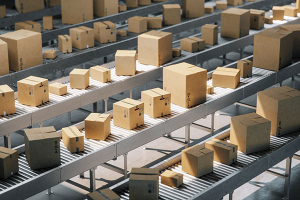5 Steps to Start Building Digital Inventory During the COVID-19 Pandemic
With digital transformation on the rise, supply chains are becoming highly networked environments, enabled by data and analytics, as well as end-to-end automation.
Inventory, which has traditionally been used to shield companies from unpredictability in demand and supply, is part of this ongoing transformation. Holding inventory has always been a costly and labor-intensive endeavor.
Inventory Management
McKinsey estimates that companies spend about €300 billion per year in warehousing alone. With demand volatility and disruptions on the rise, inventory management has also become more challenging and prone to error. This became manifest during the COVID-19 pandemic, where manufacturers across the world were forced to halt operations due to parts shortages and broken supply lines, among other issues.
Pandemics are not the only source of risk, as extreme weather events and geo-political shifts become more common.
Digital Transformation
New technologies have emerged to help companies cope with inventory risks. Digitization is transforming this critical link in the chain, especially in the realm of spare parts. As PWC writes, sophisticated analytics software now allows enterprises to forecast demand for spares more precisely than before. Digital manufacturing technologies, such as 3D printing or additive manufacturing, are also having a profound impact, especially in cases where demand has a high level of unpredictability.
McKinsey states that the digitization of the supply chain will reduce inventory holdings up to 75%. By building a digital inventory (or a virtual library of parts), companies can do away with high warehousing costs and simply produce parts or components on demand, using technologies like 3D printing.
COVID-19 Risks
Obsolescence and write-offs become a thing of the past. Parts are delivered much faster, meaning downtime and lead times are reduced. Risks caused by shifting geopolitical dynamics and pandemics like COVID-19 are also mitigated, as components can be sourced from closer locations. 3D printing allows for production close to the end use location, minimizing logistics costs and CO2 emissions from miles traveled. The benefits are clear and companies are already seeing results today, but the question most procurement and supply chain professionals ask is “where do I start?” Here are five things to consider
What’s Related




Favorites





